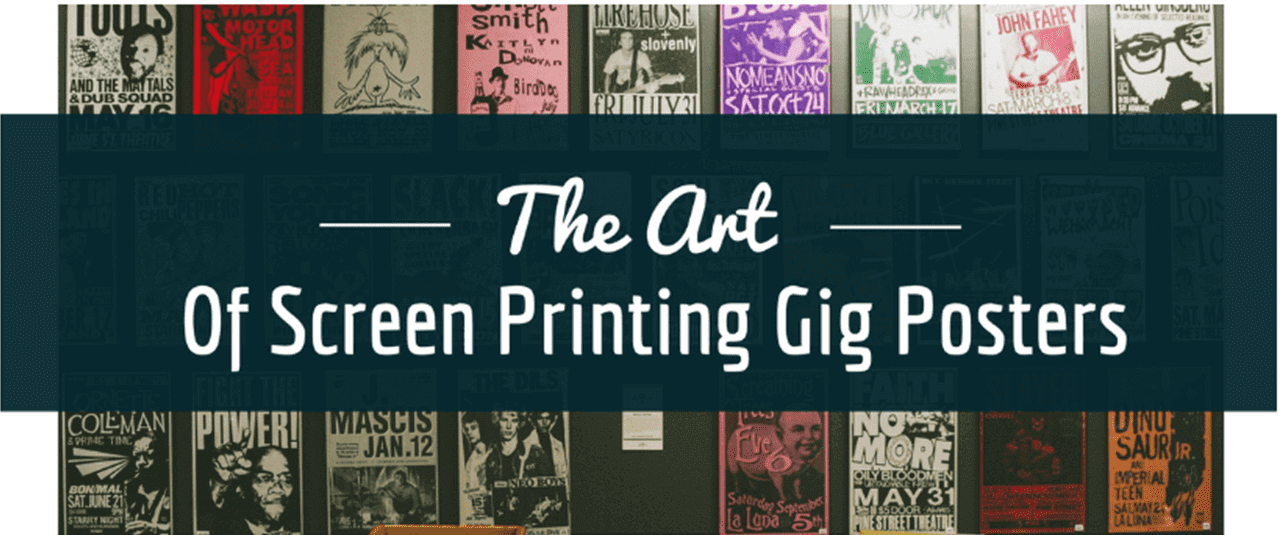No products in the cart.

Revolutionizing the screen printing industry through cutting-edge technology and quality service
Phone: +1 847-367-9760
Anatol Equipment Manufacturing Co.
1429 S Shields Dr
Waukegan, IL 60085

Revolutionizing the screen printing industry through cutting-edge technology and quality service
Anatol Equipment Manufacturing Co.
1429 S Shields Dr
Waukegan, IL 60085

There are many ways to print concert posters, including offset and digital printing, but screen printing is one of the most popular choices. Screen printing has an advantage over other methods because the process is easy, quick and affordable, especially at high volumes. And for musicians on a budget, affordability is a top priority.
While other screen printing projects can have more constricting boundaries, creating gig posters is a great way to let your imagination run wild. Because they’re designed for individual concerts, the subject matter is often left largely up to the designer. With so much free reign over the design, it’s important to do some research about the artists and their music so you can create artwork that accurately reflects their aesthetic. Give their songs a listen and get a feel for their style to help guide the design of the poster. Putting in the effort to understand your client will not only help you deliver a great print, it’ll show you respect their artwork and creativity and encourage them to use your business for future projects.
Important note: Before you’re ready to start printing, you must be sure you have permission from the artist and the venue or promoter – otherwise you’ll be making bootleg merchandise! There’s no shortage of resources you can use to help you come up with inspiration for your poster, but make sure your ideas are your own original work. Don’t let inspiration become theft.
Manual printing is a popular choice among poster screen printers looking for a more hands-on, do-it-yourself approach, an ideology that’s shared by many in the music community. For a recognized artist, limited edition, handmade prints can fetch hefty prices from collectors. Whether you choose to print manually or automatically, like printing on any flat stock, a vacuum pallet can help keep your posters in place over the course of a print run. A flatbed press is a screen printing press designed specifically for printing on flat stock like posters. Anatol’s Color Magic flatbed press has a built-in vacuum to keep substrates from shifting during printing.
Anatol’s Color Magic automatic graphic flatbed press is perfect for screen printing flat stock.
Because screen printing is easier and more affordable the fewer colors you use, you should consider limiting your palette. This is also a good way to keep your design bold and simplified when you might otherwise be tempted to go overboard with details. “Less is more” isn’t a bad rule to follow when designing posters, which are typically viewed from a distance. Halftone dots can help you create photorealistic images if you’re looking to print more detailed artwork.
Keep in mind that paper can warp with changes in humidity and temperature, so it’s a good idea to hang up your poster paper for awhile before beginning your print run, so the paper can acclimatize to the conditions in your shop. Heat can also damage or destroy paper stock, so you’ll want to use an ink that can air dry, rather than run your prints under a flash cure or through a conveyor dryer. There’s a variety of inks on the market designed specifically for poster and paper stock printing that can help you ensure you get the results you’re looking for.
Designing and screen printing concert posters is a fun and lucrative way to break from the standard t-shirt and stretch your creativity to its limits. And luckily, the printing process is virtually identical to what you’d use for garment printing, so there’s little learning curve or additional equipment required to get started. Screen printing for the music industry opens up a world of opportunities to sell your screen printed merchandise, so consider giving them a try and see where it takes you!
Your message was successfully sent!